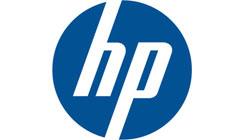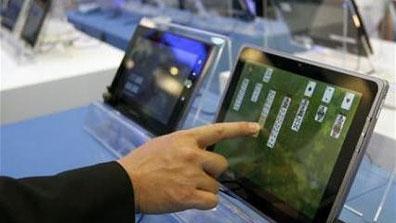 Intel's Edison PC on a chip; MakerBot "affordable" edition among its 3D printers.[/caption] At the Consumer Electronics Show (CES) every year, there's always a storm of hype and new product introductions (or demos of prototypes that'll never be seen again). This year's edition of CES is no different, but does feature some ground-breaking introductions that could make two much-hyped, little-implemented technologies common in both business and consumer products. Intel Corp. CEO Brian Krzanich announced a whole range of products designed to convince buyers that wearable computing catalogs could be more than a listing of failed prototypes and artists' illustrations. Most were earbuds, wearable fitness monitors and the like, which are popular but break little new ground. Intel's big effort at wearables is focused on Edison – a version of the Quark System-on-a-Xhip it introduced at the 2013 CES as the brains for intelligent appliances and other potential components of the Internet of Things. Edison is designed as a complete PC-on-a-Chip, based on an x86-compatible dual-core ultra-low-power-using 22nm Quark chip, that can run Linux and unnamed other operating systems as well as a range of applications. Edison also offers WiFi and Bluetooth network interfaces, NAND and LPDDR2 flash storage, a programmable microcontroller to manage data I/O, and the ability to connect to Intel's own app store – all contained in a package designed to fit in a standard SD chip slot. Edison is aimed at developers rather than consumers, so Intel also rolled out some demo products from development partners, though none of particular interest to datacenter managers. Childcare product maker Rest Devices's Mimo Baby Monitor, for example, is a cotton kimono with a padded disk that uses Edison chips to power sensors to monitor a baby's respiration, skin temperature, activity level and other factors, all of which broadcast to a separate monitor via Bluetooth Low Energy. Autodesk offered more practical help by building mechanical/electrical libraries necessary to use Edison into its 123D Circuits software that is aimed at designers creating product designs for 3D printers. By combining the two, it becomes possible for desktop designers to create and produce on 3-D printers custom-designed components with near-PC-level intelligence and connectivity built in, according to Autodesk. By making it easier for designers to concentrate on function and design, rather than how to add intelligence and programmability, Edison could boost the practicality of wearable computers, which appear near the top of most-wanted-gadget lists nearly every year despite their limited functions and availability. "Wearables are not everywhere today because they aren't yet solving real problems and they aren't yet integrated with our lifestyles," Krzanich said during his keynote. "We're focused on addressing this engineering innovation challenge [with Edison]."
Intel's Edison PC on a chip; MakerBot "affordable" edition among its 3D printers.[/caption] At the Consumer Electronics Show (CES) every year, there's always a storm of hype and new product introductions (or demos of prototypes that'll never be seen again). This year's edition of CES is no different, but does feature some ground-breaking introductions that could make two much-hyped, little-implemented technologies common in both business and consumer products. Intel Corp. CEO Brian Krzanich announced a whole range of products designed to convince buyers that wearable computing catalogs could be more than a listing of failed prototypes and artists' illustrations. Most were earbuds, wearable fitness monitors and the like, which are popular but break little new ground. Intel's big effort at wearables is focused on Edison – a version of the Quark System-on-a-Xhip it introduced at the 2013 CES as the brains for intelligent appliances and other potential components of the Internet of Things. Edison is designed as a complete PC-on-a-Chip, based on an x86-compatible dual-core ultra-low-power-using 22nm Quark chip, that can run Linux and unnamed other operating systems as well as a range of applications. Edison also offers WiFi and Bluetooth network interfaces, NAND and LPDDR2 flash storage, a programmable microcontroller to manage data I/O, and the ability to connect to Intel's own app store – all contained in a package designed to fit in a standard SD chip slot. Edison is aimed at developers rather than consumers, so Intel also rolled out some demo products from development partners, though none of particular interest to datacenter managers. Childcare product maker Rest Devices's Mimo Baby Monitor, for example, is a cotton kimono with a padded disk that uses Edison chips to power sensors to monitor a baby's respiration, skin temperature, activity level and other factors, all of which broadcast to a separate monitor via Bluetooth Low Energy. Autodesk offered more practical help by building mechanical/electrical libraries necessary to use Edison into its 123D Circuits software that is aimed at designers creating product designs for 3D printers. By combining the two, it becomes possible for desktop designers to create and produce on 3-D printers custom-designed components with near-PC-level intelligence and connectivity built in, according to Autodesk. By making it easier for designers to concentrate on function and design, rather than how to add intelligence and programmability, Edison could boost the practicality of wearable computers, which appear near the top of most-wanted-gadget lists nearly every year despite their limited functions and availability. "Wearables are not everywhere today because they aren't yet solving real problems and they aren't yet integrated with our lifestyles," Krzanich said during his keynote. "We're focused on addressing this engineering innovation challenge [with Edison]."
Intel Puts PC on SD Card; MakerBot Ships Home 3-D Printer
[caption id="attachment_15908" align="aligncenter" width="600"] Intel's Edison PC on a chip; MakerBot "affordable" edition among its 3D printers.[/caption] At the Consumer Electronics Show (CES) every year, there's always a storm of hype and new product introductions (or demos of prototypes that'll never be seen again). This year's edition of CES is no different, but does feature some ground-breaking introductions that could make two much-hyped, little-implemented technologies common in both business and consumer products. Intel Corp. CEO Brian Krzanich announced a whole range of products designed to convince buyers that wearable computing catalogs could be more than a listing of failed prototypes and artists' illustrations. Most were earbuds, wearable fitness monitors and the like, which are popular but break little new ground. Intel's big effort at wearables is focused on Edison – a version of the Quark System-on-a-Xhip it introduced at the 2013 CES as the brains for intelligent appliances and other potential components of the Internet of Things. Edison is designed as a complete PC-on-a-Chip, based on an x86-compatible dual-core ultra-low-power-using 22nm Quark chip, that can run Linux and unnamed other operating systems as well as a range of applications. Edison also offers WiFi and Bluetooth network interfaces, NAND and LPDDR2 flash storage, a programmable microcontroller to manage data I/O, and the ability to connect to Intel's own app store – all contained in a package designed to fit in a standard SD chip slot. Edison is aimed at developers rather than consumers, so Intel also rolled out some demo products from development partners, though none of particular interest to datacenter managers. Childcare product maker Rest Devices's Mimo Baby Monitor, for example, is a cotton kimono with a padded disk that uses Edison chips to power sensors to monitor a baby's respiration, skin temperature, activity level and other factors, all of which broadcast to a separate monitor via Bluetooth Low Energy. Autodesk offered more practical help by building mechanical/electrical libraries necessary to use Edison into its 123D Circuits software that is aimed at designers creating product designs for 3D printers. By combining the two, it becomes possible for desktop designers to create and produce on 3-D printers custom-designed components with near-PC-level intelligence and connectivity built in, according to Autodesk. By making it easier for designers to concentrate on function and design, rather than how to add intelligence and programmability, Edison could boost the practicality of wearable computers, which appear near the top of most-wanted-gadget lists nearly every year despite their limited functions and availability. "Wearables are not everywhere today because they aren't yet solving real problems and they aren't yet integrated with our lifestyles," Krzanich said during his keynote. "We're focused on addressing this engineering innovation challenge [with Edison]."
Intel's Edison PC on a chip; MakerBot "affordable" edition among its 3D printers.[/caption] At the Consumer Electronics Show (CES) every year, there's always a storm of hype and new product introductions (or demos of prototypes that'll never be seen again). This year's edition of CES is no different, but does feature some ground-breaking introductions that could make two much-hyped, little-implemented technologies common in both business and consumer products. Intel Corp. CEO Brian Krzanich announced a whole range of products designed to convince buyers that wearable computing catalogs could be more than a listing of failed prototypes and artists' illustrations. Most were earbuds, wearable fitness monitors and the like, which are popular but break little new ground. Intel's big effort at wearables is focused on Edison – a version of the Quark System-on-a-Xhip it introduced at the 2013 CES as the brains for intelligent appliances and other potential components of the Internet of Things. Edison is designed as a complete PC-on-a-Chip, based on an x86-compatible dual-core ultra-low-power-using 22nm Quark chip, that can run Linux and unnamed other operating systems as well as a range of applications. Edison also offers WiFi and Bluetooth network interfaces, NAND and LPDDR2 flash storage, a programmable microcontroller to manage data I/O, and the ability to connect to Intel's own app store – all contained in a package designed to fit in a standard SD chip slot. Edison is aimed at developers rather than consumers, so Intel also rolled out some demo products from development partners, though none of particular interest to datacenter managers. Childcare product maker Rest Devices's Mimo Baby Monitor, for example, is a cotton kimono with a padded disk that uses Edison chips to power sensors to monitor a baby's respiration, skin temperature, activity level and other factors, all of which broadcast to a separate monitor via Bluetooth Low Energy. Autodesk offered more practical help by building mechanical/electrical libraries necessary to use Edison into its 123D Circuits software that is aimed at designers creating product designs for 3D printers. By combining the two, it becomes possible for desktop designers to create and produce on 3-D printers custom-designed components with near-PC-level intelligence and connectivity built in, according to Autodesk. By making it easier for designers to concentrate on function and design, rather than how to add intelligence and programmability, Edison could boost the practicality of wearable computers, which appear near the top of most-wanted-gadget lists nearly every year despite their limited functions and availability. "Wearables are not everywhere today because they aren't yet solving real problems and they aren't yet integrated with our lifestyles," Krzanich said during his keynote. "We're focused on addressing this engineering innovation challenge [with Edison]."
 Intel's Edison PC on a chip; MakerBot "affordable" edition among its 3D printers.[/caption] At the Consumer Electronics Show (CES) every year, there's always a storm of hype and new product introductions (or demos of prototypes that'll never be seen again). This year's edition of CES is no different, but does feature some ground-breaking introductions that could make two much-hyped, little-implemented technologies common in both business and consumer products. Intel Corp. CEO Brian Krzanich announced a whole range of products designed to convince buyers that wearable computing catalogs could be more than a listing of failed prototypes and artists' illustrations. Most were earbuds, wearable fitness monitors and the like, which are popular but break little new ground. Intel's big effort at wearables is focused on Edison – a version of the Quark System-on-a-Xhip it introduced at the 2013 CES as the brains for intelligent appliances and other potential components of the Internet of Things. Edison is designed as a complete PC-on-a-Chip, based on an x86-compatible dual-core ultra-low-power-using 22nm Quark chip, that can run Linux and unnamed other operating systems as well as a range of applications. Edison also offers WiFi and Bluetooth network interfaces, NAND and LPDDR2 flash storage, a programmable microcontroller to manage data I/O, and the ability to connect to Intel's own app store – all contained in a package designed to fit in a standard SD chip slot. Edison is aimed at developers rather than consumers, so Intel also rolled out some demo products from development partners, though none of particular interest to datacenter managers. Childcare product maker Rest Devices's Mimo Baby Monitor, for example, is a cotton kimono with a padded disk that uses Edison chips to power sensors to monitor a baby's respiration, skin temperature, activity level and other factors, all of which broadcast to a separate monitor via Bluetooth Low Energy. Autodesk offered more practical help by building mechanical/electrical libraries necessary to use Edison into its 123D Circuits software that is aimed at designers creating product designs for 3D printers. By combining the two, it becomes possible for desktop designers to create and produce on 3-D printers custom-designed components with near-PC-level intelligence and connectivity built in, according to Autodesk. By making it easier for designers to concentrate on function and design, rather than how to add intelligence and programmability, Edison could boost the practicality of wearable computers, which appear near the top of most-wanted-gadget lists nearly every year despite their limited functions and availability. "Wearables are not everywhere today because they aren't yet solving real problems and they aren't yet integrated with our lifestyles," Krzanich said during his keynote. "We're focused on addressing this engineering innovation challenge [with Edison]."
Intel's Edison PC on a chip; MakerBot "affordable" edition among its 3D printers.[/caption] At the Consumer Electronics Show (CES) every year, there's always a storm of hype and new product introductions (or demos of prototypes that'll never be seen again). This year's edition of CES is no different, but does feature some ground-breaking introductions that could make two much-hyped, little-implemented technologies common in both business and consumer products. Intel Corp. CEO Brian Krzanich announced a whole range of products designed to convince buyers that wearable computing catalogs could be more than a listing of failed prototypes and artists' illustrations. Most were earbuds, wearable fitness monitors and the like, which are popular but break little new ground. Intel's big effort at wearables is focused on Edison – a version of the Quark System-on-a-Xhip it introduced at the 2013 CES as the brains for intelligent appliances and other potential components of the Internet of Things. Edison is designed as a complete PC-on-a-Chip, based on an x86-compatible dual-core ultra-low-power-using 22nm Quark chip, that can run Linux and unnamed other operating systems as well as a range of applications. Edison also offers WiFi and Bluetooth network interfaces, NAND and LPDDR2 flash storage, a programmable microcontroller to manage data I/O, and the ability to connect to Intel's own app store – all contained in a package designed to fit in a standard SD chip slot. Edison is aimed at developers rather than consumers, so Intel also rolled out some demo products from development partners, though none of particular interest to datacenter managers. Childcare product maker Rest Devices's Mimo Baby Monitor, for example, is a cotton kimono with a padded disk that uses Edison chips to power sensors to monitor a baby's respiration, skin temperature, activity level and other factors, all of which broadcast to a separate monitor via Bluetooth Low Energy. Autodesk offered more practical help by building mechanical/electrical libraries necessary to use Edison into its 123D Circuits software that is aimed at designers creating product designs for 3D printers. By combining the two, it becomes possible for desktop designers to create and produce on 3-D printers custom-designed components with near-PC-level intelligence and connectivity built in, according to Autodesk. By making it easier for designers to concentrate on function and design, rather than how to add intelligence and programmability, Edison could boost the practicality of wearable computers, which appear near the top of most-wanted-gadget lists nearly every year despite their limited functions and availability. "Wearables are not everywhere today because they aren't yet solving real problems and they aren't yet integrated with our lifestyles," Krzanich said during his keynote. "We're focused on addressing this engineering innovation challenge [with Edison]."


